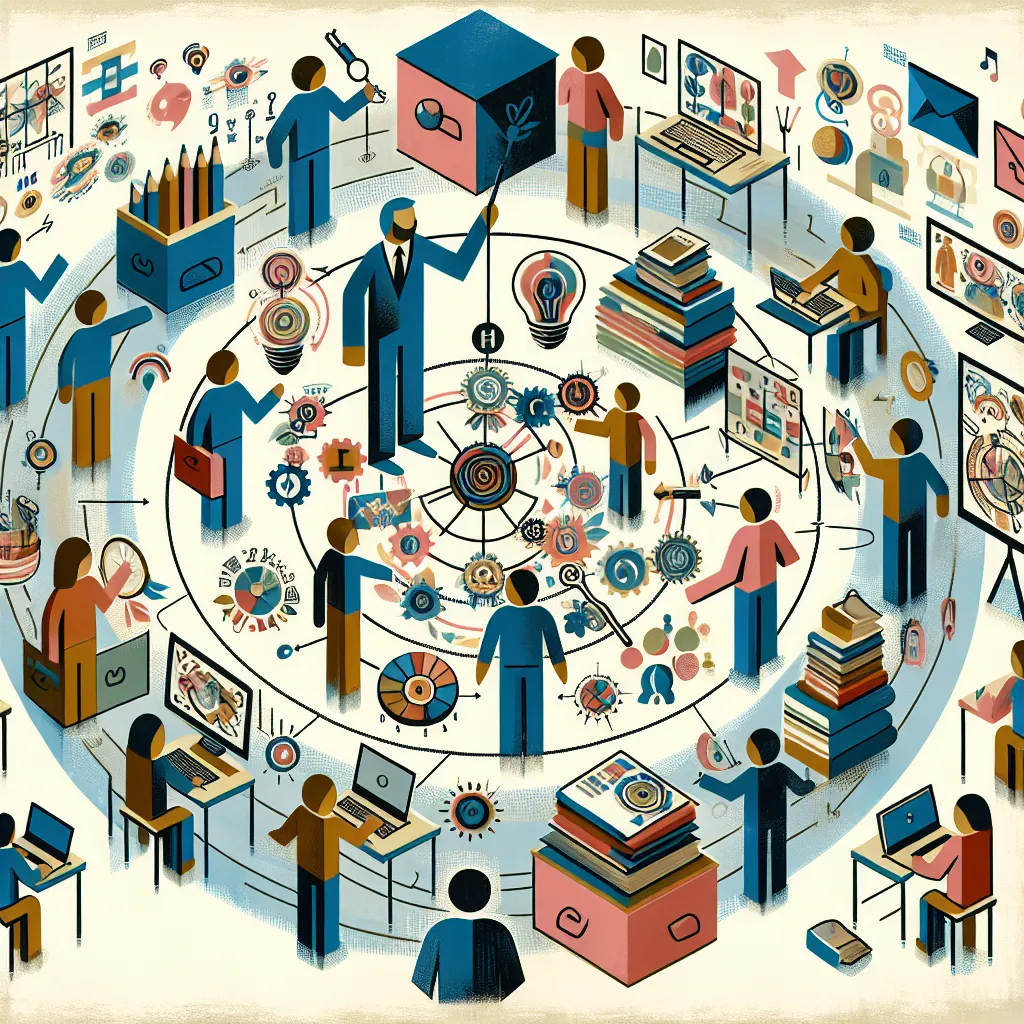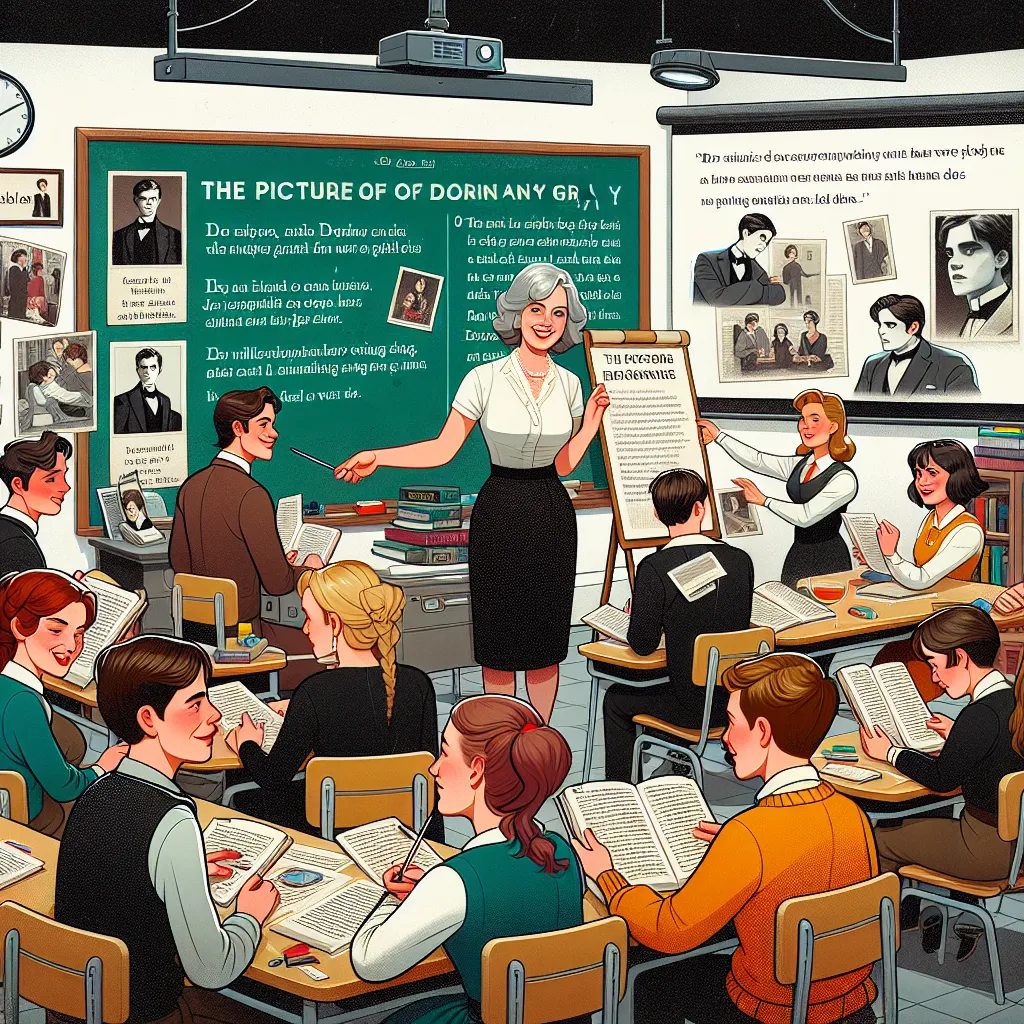Ask AI on The Internet
Question: in a lesson about concrete and abstract nouns , write down the aim of the lesson: ……………………………………………………………………………………………………………………………………………………………………………………………………………………………………………………………………………………………………………………………………… How did the teacher introduce the lesson? …………………………………………………………………………………………………………………………………………………………………………………………………………………………………………………………………………………………………………………………………………………………………………………………………………………………………………………… What were the specific activities the learners were involved in during the entire lesson? ……………………………………………………………………………………………………………………………………………………………………………………………………………………………………………………………………………………………………………………………………… Which activities did they enjoy most, and which did they not enjoy? Why do you say so? …............................................................................................................................................................................................................................................................................................................................................................................................................................................................................................................................................................................................................ What other learning activities could the learners have been involved in to assist them in understanding the concepts? ……………………………………………………………………………………………………………..…………………………………………………………………………………………………………………………………….…………………………………………………………………………………......…………….………………………………………………………………………………………….... What preparation did the teacher have to do for this lesson? ………………………………………………………………………………………………………………………………………………………………………………………………………………………………………………………………………………………………………………………………………………………………………………………………………………………………………………………………………………………………………………………………………………………………… Write down the questions the teacher asked the class during the lesson. ………………………………………………………………………………………………………………………………………………………………………………………………………………………………………………………………………………………………………………………………………………………………………………………………………………………………………………………………………………………………………………………………………………………………… What learning and teaching support materials (LTSMs) did the teacher use during the lesson? ………………………………………………………………………………………………………………………………………………………………………………………………………………………………………………………………………………………………………………………………………………………………………………………………………………………………………………………………………………………………………………………………………………………………… Can you think of other resources that would assist learners in understanding the concepts in the lesson? ………………………………………………………………………………………………………………………………………………………………………………………………………………………………………………………………………………………………………………………………………………………………………………………………………………………………………………….. Were there any disruptive incidents during the lesson? …………………………………………………………………………………………………………………………………………………………………………………………………………………………………………………………………………………………………………………………………………………………………………………………………………………………………………………… If you identified a disruptive incident in the question above, how did the teacher deal with them? Alternatively, if there were no incidents, what did the teacher do to ensure that they did not take place? ………………………………………………………………………………………………………………..……………..............................................................................................................................................………………………………………………………………………………………………………… (10) when teaching a lesson on literal , figurative meaning as well as metaphors and personification write down the aim of the lesson: …………………………………………………………………………………………………………………………………………………………………………………………………………………………………………………………………………………………………………………………………………………………………………………………………………………………………………………… How did the teacher introduce the lesson? …………………………………………………………………………………………………………………………………………………………………………………………………………………………………………………………………………………………………………………………………………………………………………………………………………………………………………………… What were the specific activities the learners were involved in during the entire lesson? …………………………………………………………………………………………………………………………………………………………………………………………………………………………………………………………………………………………………………………………………………………………………………………………………………………………………………………… Which activities did they enjoy most, and which did they not enjoy? Why do you say so? …………………………………………………………………………………………………………………………………………………………………………………………………………………………………………………………………………………………………………………………………………………………………………………………………………………………………………………... What other learning activities could the learners have been involved in to assist them in understanding the concepts? …………………………………………………………………………………………………………………………………………………………………………………………………………………………………………………………………………………………………………………………………………………………………………………………………………………………………………………… What preparation did the teacher have to do for this lesson? …………………………………………………………………………………………………………………………………………………………………………………………………………………………………………………………………………………………………………………………………………………… Write down the questions the teacher asked the class during the lesson. …………………………………………………………………………………………………………………………………………………………………………………………………………………………………………………………………………………………………………………………………………………………………………………………………………………………………………………… What learning and teaching support materials (LTSMs) did the teacher use during the lesson? …………………………………………………………………………………………………………………………………………………………………………………………………………………………………………………………………………………………………………………………………………………………………………………………………………………………………………………… Can you think of other resources that would assist learners in understanding the concepts in the lesson? ………………………………………………………………………………………………………………………………………………………………………………………………………………………………………………………………………………………………………………………………………………………………………………………………………………………………………………….. Were there any disruptive incidents during the lesson? …………………………………………………………………………………………………………………………………………………………………………………………………………………………………………………………………………………………………………………………………………………………………………………………………………………………………………………… If you identified any disruptive incidents in the question above, how did the teacher deal with them? Alternatively, if there were no incidents, what did the teacher do to ensure that they did not take place? ........................................................................................................................................................................................................................................................................................................................................................................................................................................................................................................................................................................................................(10) when teaching the difference between denotative and connotative write down the aim of the lesson: …………………………………………………………………………………………………………………………………………………………………………………………………………………………………………………………………………………………………………………………………………………………………………………………………………………………………………………… How did the teacher introduce the lesson? …………………………………………………………………………………………………………………………………………………………………………………………………………………………………………………………………………………………………………………………………………………………………………………………………………………………………………………… What were the specific activities the learners were involved in during the entire lesson? …………………………………………………………………………………………………………………………………………………………………………………………………………………………………………………………………………………………………………………………………………………………………………………………………………………………………………………… Which activities did they enjoy most, and which did they not enjoy? Why do you say so? ................................................................................................................................................................................................................................................................................................................................................................................................................................................................................................................................................................................................................ What other learning activities could the learners have been involved in to assist them in understanding the concepts? …………………………………………………………………………………………………………………………………………………………………………………………………………………………………………………………………………………………………………………………………………………………………………………………………………………………………………………… What preparation did the teacher have to do for this lesson? …………………………………………………………………………………………………………………………………………………………………………………………………………………………………………………………………………………………………………………………………………………………………………………………………………………………………………………… Write down the questions the teacher asked the class during the lesson. …………………………………………………………………………………………………………………………………………………………………………………………………………………………………………………………………………………………………………………………………………………………………………………………………………………………………………………… What learning and teaching support materials (LTSMs) did the teacher use during the lesson? …………………………………………………………………………………………………………………………………………………………………………………………………………………………………………………………………………………………………………………………………………………………………………………………………………………………………………………… Can you think of other resources that would assist learners in understanding the concepts in the lesson? …………………………………………………………………………………………………………………………………………………………………………………………………………………………………………………………………………………………………………………………………………………………………………………………………………………………………………………… Were there any disruptive incidents during the lesson? …………………………………………………………………………………………………………………………………………………………………………………………………………………………………………………………………………………………………………………………………………………………………………………………………………………………………………………… If you identified any disruptive incidents in the question above, how did the teacher deal with them? Alternatively, if there were no incidents, what did the teacher do to ensure that they did not take place? …………………………………………………………………………………………………............................................................................................................................................................................................................................................................................................................(10) Attach the following documents as evidence of the lesson you observed: • The lesson plan (5) • A copy or photo of the learning material used (5) • A copy of the assessment activity (5) TOTAL: (25) when teaching learners to break down big words in order for better understanding, write down the aim of the lesson: …………………………………………………………………………………………………………………………………………………………………………………………………………………………………………………………………………………………………………………………………………………………………………………………………………………………………………………… How did the teacher introduce the lesson? …………………………………………………………………………………………………………………………………………………………………………………………………………………………………………………………………………………………………………………………………………………………………………………………………………………………………………………… What were the specific activities the learners were involved in during the entire lesson? …………………………………………………………………………………………………………………………………………………………………………………………………………………………………………………………………………………………………………………………………………………………………………………………………………………………………………………… Which activities did they enjoy most, and which did they not enjoy? Why do you say so? ................................................................................................................................................................................................................................................................................................................................................................................................................................................................................................................................................................................................................ What other learning activities could the learners have been involved in to assist them in understanding the concepts? …………………………………………………………………………………………………………………………………………………………………………………………………………………………………………………………………………………………………………………………………………………………………………………………………………………………………………………… What preparation did the teacher have to do for this lesson? …………………………………………………………………………………………………………………………………………………………………………………………………………………………………………………………………………………………………………………………………………………………………………………………………………………………………………………… Write down the questions the teacher asked the class during the lesson. …………………………………………………………………………………………………………………………………………………………………………………………………………………………………………………………………………………………………………………………………………………………………………………………………………………………………………………… What learning and teaching support materials (LTSMs) did the teacher use during the lesson? …………………………………………………………………………………………………………………………………………………………………………………………………………………………………………………………………………………………………………………………………………………………………………………………………………………………………………………… Can you think of other resources that would assist learners in understanding the concepts in the lesson? …………………………………………………………………………………………………………………………………………………………………………………………………………………………………………………………………………………………………………………………………………………………………………………………………………………………………………………… Were there any disruptive incidents during the lesson? …………………………………………………………………………………………………………………………………………………………………………………………………………………………………………………………………………………………………………………………………………………………………………………………………………………………………………………… If you identified any disruptive incidents in the question above, how did the teacher deal with them? Alternatively, if there were no incidents, what did the teacher do to ensure that they did not take place? …………………………………………………………………………………………………............................................................................................................................................................................................................................................................................................................(10) when administrating a pop quiz about the weeks work, write down the aim of the lesson: …………………………………………………………………………………………………………………………………………………………………………………………………………………………………………………………………………………………………………………………………………………………………………………………………………………………………………………… How did the teacher introduce the lesson? …………………………………………………………………………………………………………………………………………………………………………………………………………………………………………………………………………………………………………………………………………………………………………………………………………………………………………………… What were the specific activities the learners were involved in during the entire lesson? …………………………………………………………………………………………………………………………………………………………………………………………………………………………………………………………………………………………………………………………………………………………………………………………………………………………………………………… Which activities did they enjoy most, and which did they not enjoy? Why do you say so? ................................................................................................................................................................................................................................................................................................................................................................................................................................................................................................................................................................................................................ What other learning activities could the learners have been involved in to assist them in understanding the concepts? …………………………………………………………………………………………………………………………………………………………………………………………………………………………………………………………………………………………………………………………………………………………………………………………………………………………………………………… What preparation did the teacher have to do for this lesson? …………………………………………………………………………………………………………………………………………………………………………………………………………………………………………………………………………………………………………………………………………………………………………………………………………………………………………………… Write down the questions the teacher asked the class during the lesson. …………………………………………………………………………………………………………………………………………………………………………………………………………………………………………………………………………………………………………………………………………………………………………………………………………………………………………………… What learning and teaching support materials (LTSMs) did the teacher use during the lesson? …………………………………………………………………………………………………………………………………………………………………………………………………………………………………………………………………………………………………………………………………………………………………………………………………………………………………………………… Can you think of other resources that would assist learners in understanding the concepts in the lesson? …………………………………………………………………………………………………………………………………………………………………………………………………………………………………………………………………………………………………………………………………………………………………………………………………………………………………………………… Were there any disruptive incidents during the lesson? …………………………………………………………………………………………………………………………………………………………………………………………………………………………………………………………………………………………………………………………………………………………………………………………………………………………………………………… If you identified any disruptive incidents in the question above, how did the teacher deal with them? Alternatively, if there were no incidents, what did the teacher do to ensure that they did not take place? …………………………………………………………………………………………………............................................................................................................................................................................................................................................................................................................(10)
### **Lesson on Concrete and Abstract Nouns** **Aim of the Lesson:** To enable students to identify and differentiate between concrete and abstract nouns through various exercises and activities. **How did the teacher introduce the lesson?** The teacher began the lesson by asking students to name a few objects they could see around the classroom (concrete nouns) and then moved on to emotions or ideas they could feel or think about (abstract nouns). This was followed by defining both concrete and abstract nouns. **Specific activities the learners were involved in during the entire lesson:** - Listing and categorizing words as concrete or abstract nouns. - Small group discussions on the importance of distinguishing between the two. - Worksheet exercises for identifying concrete and abstract nouns in sentences. - Role-playing scenarios where students used concrete and abstract nouns. **Which activities did they enjoy most and which did they not enjoy? Why do you say so?** Students enjoyed the role-playing scenarios because they found it engaging and interactive. They did not enjoy the worksheet exercises as much as they found them repetitive and less engaging. **What other learning activities could the learners have been involved in to assist them in understanding the concepts?** - Creating their own sentences combining both types of nouns. - Interactive digital games focusing on noun identification. - Drawing objects and writing corresponding abstract nouns. **What preparation did the teacher have to do for this lesson?** - Preparing a list of objects and emotions. - Designing and printing worksheets. - Setting up group activities and roles for role-play. - Preparing visual aids and possibly a PowerPoint presentation. **Write down the questions the teacher asked the class during the lesson:** - "Can someone give me an example of something you can touch?" - "What is a feeling that you have experienced today?" - "Is 'happiness' a concrete or abstract noun?" - "Who can categorize these words into concrete or abstract?" **What learning and teaching support materials (LTSMs) did the teacher use during the lesson?** - Worksheets - Visual aids (charts and posters) - Flashcards - Objects for demonstration **Can you think of other resources that would assist learners in understanding the concepts in the lesson?** - Interactive whiteboards - Educational software or apps focused on nouns. - Physical objects and pictorial cards for sorting activities. **Were there any disruptive incidents during the lesson?** There were a few minor disruptions, such as students chatting during group activities. **If you identified a disruptive incident, how did the teacher deal with them?** The teacher calmly addressed the disruption by reminding the students of the classroom rules and redirected attention back to the lesson. --- ### **Lesson on Literal, Figurative Meaning, Metaphors, and Personification** **Aim of the Lesson:** To help students understand and differentiate between literal and figurative language, and to identify and use metaphors and personification in writing. **How did the teacher introduce the lesson?** The teacher began with a short video clip showcasing examples of literal and figurative language in popular media, followed by a class discussion to outline their differences. **Specific activities the learners were involved in during the entire lesson:** - Analyzing sentences to identify literal and figurative language. - Group work to create examples of metaphors and personification. - Writing short paragraphs using metaphors and personification. - Sharing their work with the class and receiving feedback. **Which activities did they enjoy most and which did they not enjoy? Why do you say so?** Students enjoyed creating their own examples of figurative language as it allowed for creative expression. However, they found analyzing given sentences less interesting as it was more structured and less creative. **What other learning activities could the learners have been involved in to assist them in understanding the concepts?** - Interactive storytelling sessions. - Creating visual art based on metaphors or personification. - Digital platforms for creating and sharing figurative expressions. **What preparation did the teacher have to do for this lesson?** - Selecting an appropriate video clip. - Preparing a list of sentences for analysis. - Designing group activities and worksheets. - Setting up a sharing session. **Write down the questions the teacher asked the class during the lesson:** - "What is the difference between literal and figurative language?" - "Can anyone give me an example of a metaphor?" - "How would you use personification to describe the wind?" - "What imagery does this metaphor create in your mind?" **What learning and teaching support materials (LTSMs) did the teacher use during the lesson?** - Video clips - Handouts - Worksheets - Art materials for creative visualization **Can you think of other resources that would assist learners in understanding the concepts in the lesson?** - Tablets or computers for interactive online exercises. - Literature books with rich figurative language examples. **Were there any disruptive incidents during the lesson?** One group had difficulty staying focused and was easily distracted. **If you identified any disruptive incidents in the question above, how did the teacher deal with them?** The teacher approached the group and provided additional guidance, refocusing their attention on the task. --- ### **Lesson on Denotative and Connotative Meanings** **Aim of the Lesson:** To help students understand the difference between denotative (literal) and connotative (suggestive) meanings of words. **How did the teacher introduce the lesson?** The teacher started with a `Word Association` game, where students were asked to say the first word that comes to their mind when given a particular word, thus showcasing connotation. **Specific activities the learners were involved in during the entire lesson:** - Matching words with their denotative and connotative meanings. - Group discussions on the connotations of common words and phrases. - Creating posters to depict connotative meanings visually. - Writing short stories or paragraphs using words with strong connotations. **Which activities did they enjoy most and which did they not enjoy? Why do you say so?** Students enjoyed the Word Association game and poster creation as they found these activities engaging and interactive. They were less enthusiastic about the matching activity, finding it more monotonous. **What other learning activities could the learners have been involved in to assist them in understanding the concepts?** - Interactive online quizzes. - Role-playing scenarios using words with different connotations. - Debates or discussions on how connotations can affect perception. **What preparation did the teacher have to do for this lesson?** - Preparing a list of words for the Word Association game. - Creating matching exercises and worksheets. - Gathering materials for poster creation. - Designing group activities. **Write down the questions the teacher asked the class during the lesson:** - "What is the denotative meaning of the word ‘snake’?" - "What connotations come to mind when you hear the word ‘home’?" - “How does a word’s connotation change the way we interpret sentences?" **What learning and teaching support materials (LTSMs) did the teacher use during the lesson?** - Flashcards - Posters and markers - Worksheets - Word lists for association **Can you think of other resources that would assist learners in understanding the concepts in the lesson?** - Multimedia tools that show the context usage of words. - Interactive digital platforms for word games. **Were there any disruptive incidents during the lesson?** No major disruptions occurred. The teacher maintained student engagement throughout. **If there were no incidents, what did the teacher do to ensure that they did not take place?** The teacher ensured that all activities were interactive and varied, thus keeping students engaged and focused. --- ### **Lesson on Breaking Down Big Words** **Aim of the Lesson:** To teach students strategies for breaking down complex words into manageable parts to enhance comprehension and retention. **How did the teacher introduce the lesson?** The teacher introduced the lesson by showing a very long and complex word and breaking it down into its roots and affixes in front of the class. **Specific activities the learners were involved in during the entire lesson:** - Breaking down complex words into prefixes, roots, and suffixes. - Creating a word map to show the parts of a word. - Pair activities to practice breaking down and understanding new words. - Games such as “Word Construction” where students build words from given parts. **Which activities did they enjoy most and which did they not enjoy? Why do you say so?** Students enjoyed the “Word Construction” game as it was interactive and competitive. They did not enjoy the worksheet exercises as much because they found them more tedious. **What other learning activities could the learners have been involved in to assist them in understanding the concepts?** - Interactive online word games. - Collaborative projects creating new words. - Visual arts projects illustrating word breakdown. **What preparation did the teacher have to do for this lesson?** - Preparing lists of complex words. - Designing worksheets and word maps. - Setting up the “Word Construction” game. - Creating visual aids for word parts (prefixes, roots, suffixes). **Write down the questions the teacher asked the class during the lesson:** - "What is the root word in 'unbelievable'?" - "How does the prefix change the meaning of the word?" - "Can anyone break down the word 'precondition'?" **What learning and teaching support materials (LTSMs) did the teacher use during the lesson?** - Worksheets - Word maps - Flashcards - Game materials **Can you think of other resources that would assist learners in understanding the concepts in the lesson?** - Digital apps for vocabulary building. - Interactive whiteboards for collaborative word mapping. **Were there any disruptive incidents during the lesson?** There were minimal disruptions, such as off-task behavior during group activities. **If you identified any disruptive incidents in the question above, how did the teacher deal with them?** The teacher used proximity control and gentle reminders to keep students on task. --- ### **Administering a Pop Quiz** **Aim of the Lesson:** To assess students' understanding and retention of the week’s lessons through an unannounced quiz. **How did the teacher introduce the lesson?** The teacher announced a surprise quiz and explained its purpose to assess their understanding of the week's topics. **Specific activities the learners were involved in during the entire lesson:** - Taking a written pop quiz. - Reviewing their answers and discussing any mistakes. **Which activities did they enjoy most and which did they not enjoy? Why do you say so?** The quiz itself may not have been enjoyable for all, but the review session was beneficial and engaging as it provided clarity. **What other learning activities could the learners have been involved in to assist them in understanding the concepts?** - Interactive review games prior to the quiz. - Group study sessions. - Peer-teaching activities. **What preparation did the teacher have to do for this lesson?** - Preparing the quiz questions and answer sheets. - Setting up a review session. - Gathering necessary materials (e.g., pens, paper). **Write down the questions the teacher asked the class during the lesson:** - "Why do we use metaphors in writing?" - "Can you give me an example of a concrete noun from our last lesson?" - “What is the difference between denotative and connotative meanings?” **What learning and teaching support materials (LTSMs) did the teacher use during the lesson?** - Quiz papers - Review materials - Visual aids for explanations **Can you think of other resources that would assist learners in understanding the concepts in the lesson?** - Online quiz platforms. - Interactive review software. **Were there any disruptive incidents during the lesson?** A few students appeared anxious about the surprise quiz. **If you identified any disruptive incidents in the question above, how did the teacher deal with them?** The teacher reassured the students by explaining the importance of the quiz as a learning tool rather than a strict assessment. --- ### **Documents to Attach:** - **Lesson Plan:** A detailed plan outlining objectives, methods, activities, and assessments for each lesson. - **Learning Material:** Copies or photos of worksheets, handouts, visual aids, and digital resources used. - **Assessment Activity:** A copy of the quiz or any other assessment tool used during the lessons. ### **Summary:** These observations capture how diverse strategies can be employed to teach different concepts effectively, ensuring engagement, understanding, and retention among students, while also addressing and mitigating any potential disruptions.
Think your answer is better than the AI's? Post it below.
Other Most Relevant Posts:
 Lesson Observation 6: Exile & Identity
Lesson Observation 7: Dorian Gray Context
Lesson Observation 8: Dorian Gray Analysis
Lesson Observation 9: Poem & Ad Comparison
Lesson Observation 1
Lesson Observation 6: Exile & Identity
Lesson Observation 7: Dorian Gray Context
Lesson Observation 8: Dorian Gray Analysis
Lesson Observation 9: Poem & Ad Comparison
Lesson Observation 1
 Section A (20): Understand Concepts in Language, Didactics, Genres, and Learning
Section B (40): Discuss Carol Read’s Pillars of Creativity
Section B: Analyze Key Themes in Multimodal Literac
Section A (20): Understand Concepts in Language, Didactics, Genres, and Learning
Section B (40): Discuss Carol Read’s Pillars of Creativity
Section B: Analyze Key Themes in Multimodal Literac
 Lesson Observation 6: Analyzing Themes and Emotions in "Returning from Exile"
Lesson Observation 7: Comprehension Skills in "The Picture of Dorian Gray"
Lesson Observation 8: Themes and Character
Lesson Observation 6: Analyzing Themes and Emotions in "Returning from Exile"
Lesson Observation 7: Comprehension Skills in "The Picture of Dorian Gray"
Lesson Observation 8: Themes and Character
Question Tags
If you want your question answered by an AI, click here.




Post your own comment: